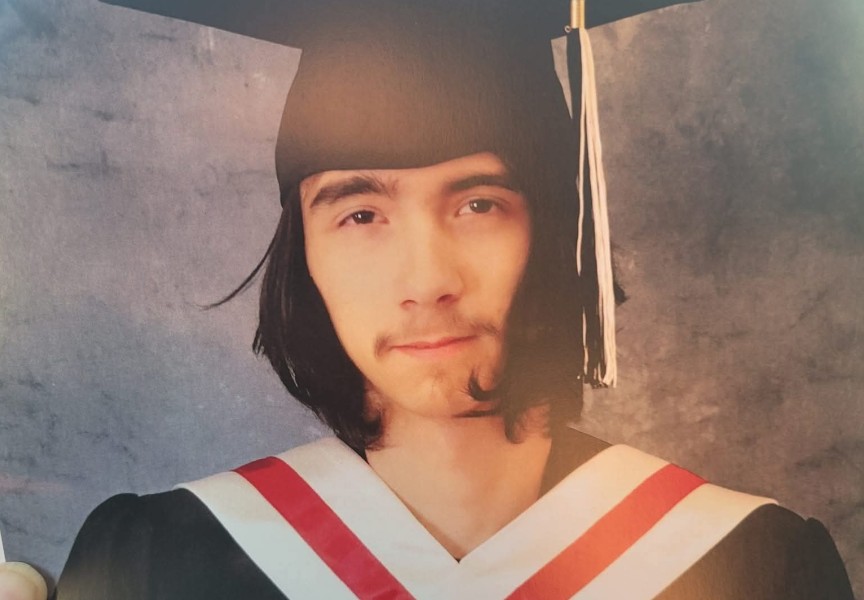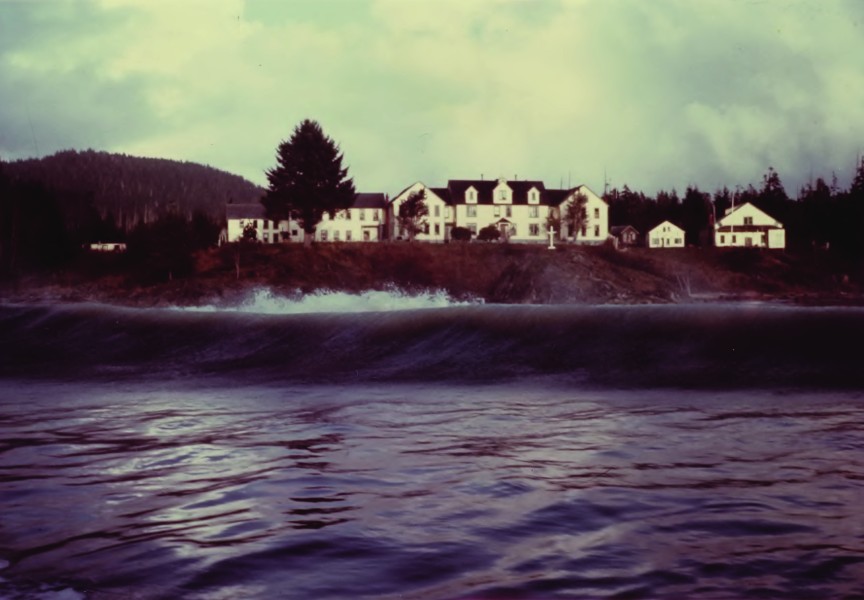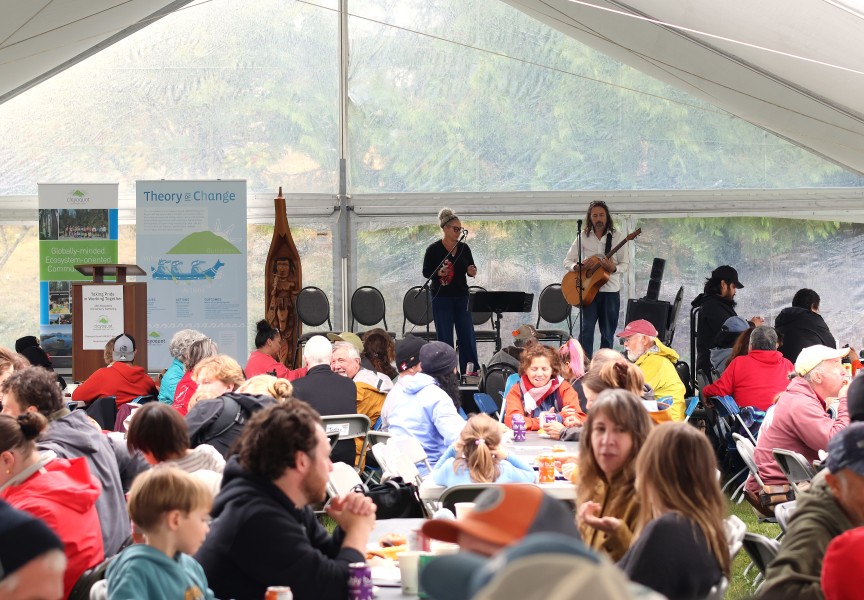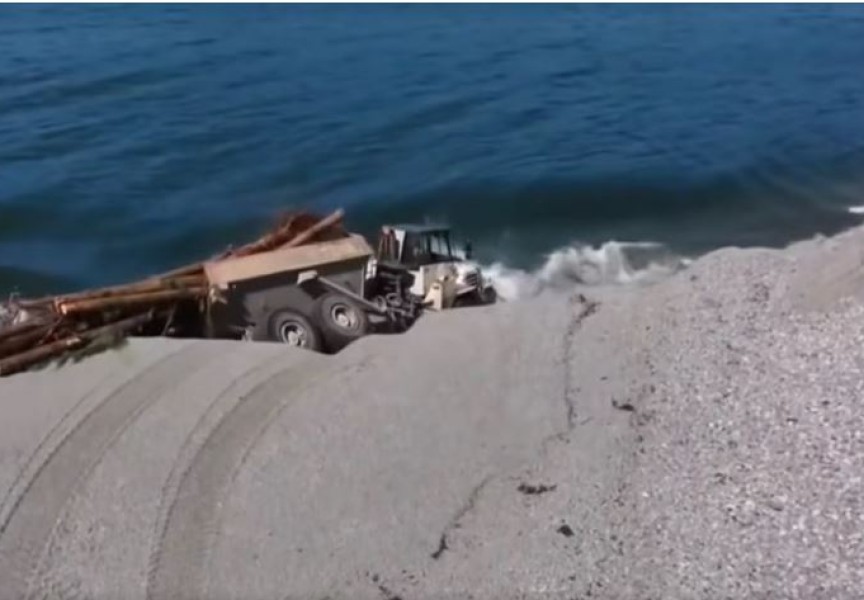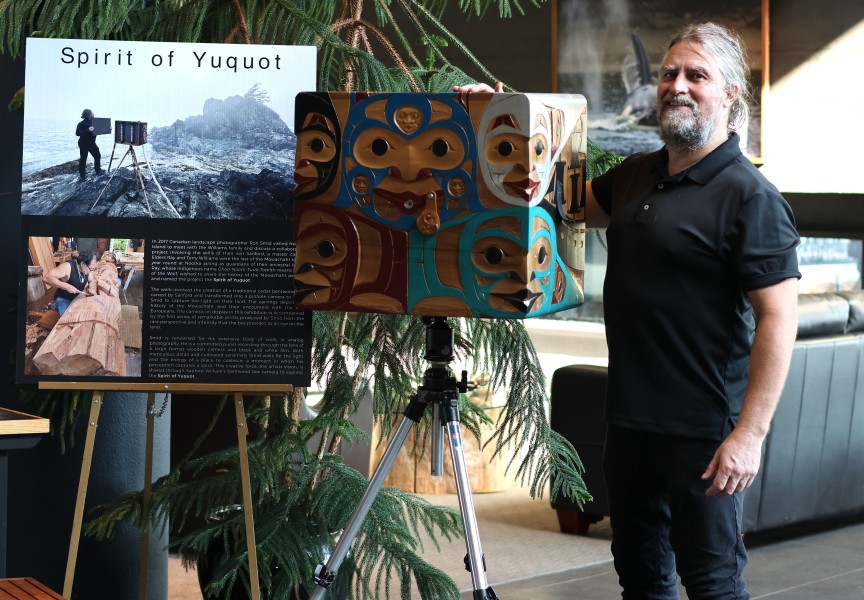It was an enthusiastic and engaged crowd that attended the first day of the cultural oppression workshop, titled From Legacy to Choice: Healing Trauma; One Life at a Time.
Facilitated by Jane Middleton-Moz, internationally-known expert on community intervention, the workshop was held in Maht Mahs gym, and the place was teaming with people eager to understand the effects of trauma and how to heal, not only as individuals, but as families and communities.
Middleton-Moz has appeared on such television shows as Oprah, Maury Povich and Montell Williams, and at one time had her own PBS special.
After sharing some personal experiences from her own life with the participants, Middleton-Moz had them break into groups of five to work together. She asked them to draw concentric circles on paper, and write in the centre the strengths that the Creator had given them.
The next outer circle was for the people who supported them moving forward, believed in them and strengthened their ability to care for themselves.
The next circle was devoted to the safe places they could go any time in their minds. And a fourth circle was reserved for the support people today who they could talk to anytime, who supported their growth in a good way.
She said these people were “two-way traffic friends”. They are supportive of you and you are supportive in return. They are the people you call in the middle of the night, that will stand with you and keep you grounded in your life.
Middleton-Moz would talk about methods of oppression that have been exerted on every Indigenous person on the planet, but first she reminded people that “oppressors are not a colour.” They are a group of about three per cent of people in the world who oppress the other 97 per cent, she said.
These methods of oppression have been used for many thousands of years, Middleton-Moz said, “and we fall for them every time.” And sometimes, people bring those methods back to our own communities to oppress each other.
But before speaking more about oppression, she talked about the needs of all children in their development and shared her Children’s Bill of Rights. Among those rights, she said, is a child’s right to be “attuned to”. She explained that as the capacity of the caregiver to read the child’s cues and respond to them accordingly.
Children have the right to be nurtured and live free from stress. Abandonment and neglect are one of the top causes of suicide, Middleton-Moz said.
Children need love and limits. They need to be nurtured and they need the word no.
They need to have a voice, and to be heard. They need responsibility and accountability; to feel pride in their accomplishments; to make decisions and learn from their mistakes; to have mentors and patient teachers; to become independent a little at a time, and be supported through normal developmental stages; to have boundaries and know the difference between nurturing and sexuality.
Sexual abuse is one of the leading contributors of suicide, Middleton-Moz said.
Children have the right to learn they can leave you without losing you, and stay with you without losing themselves. They need to feel pride in their self and their culture, and be supported.
A video made by Middleton-Moz’s own daughter expressed the sentiment that children learn what they live. If they live with criticism, they learn to condemn; with hostility, they learn to fight; with fear, they become apprehensive. Anxiety will teach them to be afraid. If they live with pity, they will feel sorry for themselves.
If they live with encouragement, however, they will be confident. Tolerance breeds patience. Praise leads to feeling appreciated. Approval will teach them to like themselves. If they live with expectations, they will push themselves and accomplish their goals.
Children, she said, needed the five A’s to grow and be happy, and to have the “scaffolding” to build their lives on: Attention, attunement, acceptance, appreciation and affection.
Human beings are the only species that take eight years of life to become what they are to be, Middleton-Moz said. It takes the people around them to teach them how to sooth themselves, how to manage their emotions, how to view the world around them, to teach them what they are supposed to do and how to be in relationships, teach what is right, what is wrong and what is normal.
This is done through how children are held and cuddled, the tone of the caregiver’s voice and the look in his or her eyes, and their responses to the children.
That’s how we learn, she said. We take from the outside and bring it to the inside to develop our beliefs about ourselves.
This attachment relationship is critical, Middleton-Moz said. It is the scaffolding upon which all physical, psychological, social and moral development occurs. Attachment is the most important thing we have in life.
When they took kids from families and put them in residential schools, what happened to those attachments, she asked the group. And what happened when those kids came home and began their own families? First Nations communities continue to suffer from that lack of attachment over the generations.
The first step of the oppressor is to systematically break down the cultural values of a community and replace them with the values of the dominant group, because values are what tie a community together, Middleton-Moz said.
In North America, it was against the law for First Nations to hold a ceremony, smoke a pipe, sing their songs. In Canada the potlatch did not come back until 1954, she said.
“If you have your values, you haven’t lost the war,” an elder would once share with her. But those who do not have a well-formed value system have no internal compass to tell them right or wrong. They make decisions based on what they see, and depend on things outside of themselves for guidance. They seek happiness where it cannot be found.
She shared the values of her Anishnabe people: Respect, cooperation, gratitude, spirituality, honesty, humility, compassion, responsibility, inclusion and belonging, kindness and bravery. They are the same values shared by many Indigenous communities the world over.
The values of the oppressor were then shared: Might is right; my way or the highway; the blame game; them vs us; I know what’s right for you; ownership; the haves and have nots; me, not we; highly competitive; punishment; not non conformity; survival of the strongest; secrets hidden behind the mask of high moral standards; don’t feel; exclusion for speaking up or questioning; be like me in thought, action and beliefs; and there is no room for differences.
The next method of the oppressor is the removal of the children. Break down the family and the circle of safety, and this will strike the community at its core. Examples of ways that have split Indigenous families in Canada were shared by the group, including residential school, the redefinition of what a family is, foster care and adoption, wars, alcohol, politics, violence, colonisation, prisons, loss of language and culture, the Sixties Scoop, status vs. non-status and re-location.
Historically, Middleton-Moz said, everyone had a special role in teaching the children.
She brought five people into a circle at the room’s centre to represent the children. They were cared for, watched over and sacred within the circle of life.
She placed behind them a mom for every child. And the moms were considered sacred within the community, because they were life-givers, and nothing was more important than their children.
For every mom there was a grandmother. The grandmothers held the moms, while the moms held onto their babies. Grandmothers were in charge of teachings, sharing stories and had an important role in the family in supporting the moms.
Then she brought the men into the circle, surrounding the children and women, tasking the men with providing for and protecting those in this circle.
The sacred circle of life, said Middleton-Moz, was part of every Indigenous community. That doesn’t mean there was no pain, but the children were surrounded by community. There were lots of eyes watching over them, and teachings provided them and safety afforded them. The children learned strength and pride of belonging.
“One of the things we lack today is a terminal lack of belonging,” Middleton-Moz said.
The strongest of all things is the circle, she shared. The group expressed a big sense of responsibility to each other, holding each other up, feeling that they were part of a whole. They felt a sense of belonging and being connected and of being safe and secure.
Then Middleton-Moz took the children away. Men expressed rage because they could not protect the children. The loss damaged the hearts and spirits of the women. Middleton-Moz said if someone had come to her home and taken her children, “I don’t know if I could have survived.”
But that’s what has happened over and over the generations in First Nations communities.
She then went back to the people in the group and asked what they were feeling. It was guilt, powerlessness and vulnerability. ‘What could I have done? Why couldn’t I have done something? What is the matter with me?’ They felt panic; an urge to fight. There was confusion. ‘How did this happen? What could I have done to prevent it?’
And there was sorrow and grief.
And how did the kids feel? They didn’t know removing them from their group was a government policy. They felt scared, confused, lost and longing to go home, but primarily, they felt abandoned and alone.
The quickest way to destroy a community is to take its children, said Middleton-Moz. And it just kept happening. That’s the next method of oppression; continue the trauma. (Other methods of oppression include breeding suspicion of our own leaders or anyone with a voice, causing community division, and promoting inferiority and helplessness.)
What is not grieved and talked about becomes trauma, she said, and, without supports, people begin to disconnect from one another, which leads to alcohol and drugs. Addiction is a result of trauma, but addiction can become its own trauma, she explained.
Then comes domestic violence and sexual abuse, community violence, suicide, school drop outs, homicide, gangs and school shootings. This is the cycle of trauma, but the hopeful part, said Middleton-Moz, is that this cycle can be reversed as quickly as it grows.
Let’s not forget what happened to the children while they were away, said one participant. That has to be acknowledged. The children experienced their own unique trauma. They didn’t get what they needed to develop and live their lives (the five A’s). And in many cases there was also physical, sexual and emotional violence and abuse.
And often when they were returned to their community, they came back to chaos, alcoholism, hurt, violence, the beginning of tremendous lateral violence and community division. And in the community’s chaos, the children’s grief was not validated. They did not speak about their experiences, nor were they supported to heal, and that resulted in trauma upon trauma.
The young people of our communities today are living with pages upon pages of trauma gone unsupported and unhealed, she said.
Middleton-Moz took the group through an exercise that demonstrated how issues like addiction and domestic violence further separates children from their families and how members of the family react to the disturbance, sometimes disappearing altogether.
She also put together people by nations and had them draw up trauma lines. They were to list the genesis of trauma in their communities, and note the impacts over the decades, including noting the people who were lost to suicide and the ages that they took their lives.
The event was hosted by the Nuu-chah-nulth Tribal Council’s Mental Health department in partnership with First Nations Health Authority.

